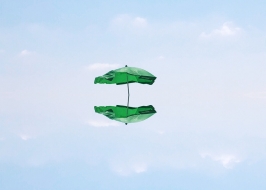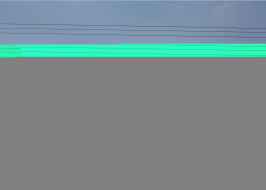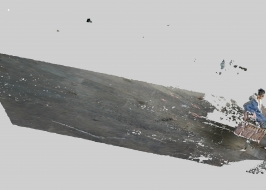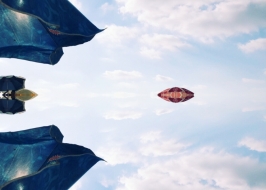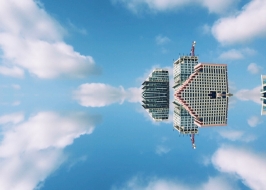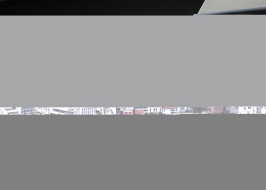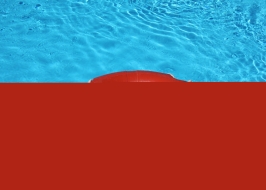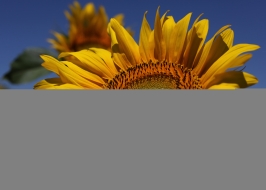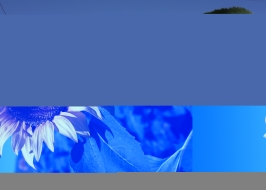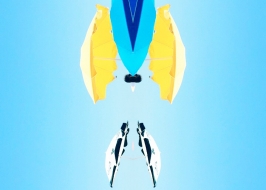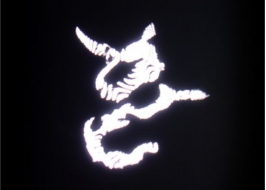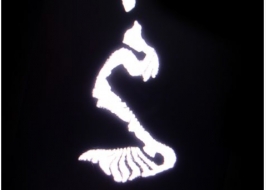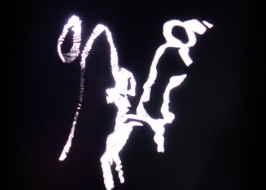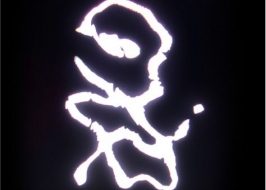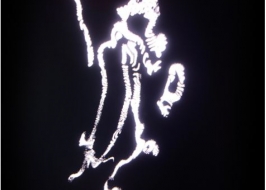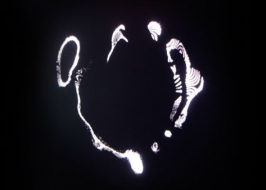Maya Smira & Carmi Dror"Now with Noise"The David Lopatie International Conference Center, Weizmann Institute of Science, Rehovot1
Noise is generally unwelcome, especially when it competes with a desired signal. There is an ongoing struggle between noise and signal in our natural environment as well as in our various technological systems. Sometimes the wanted information comes out on top, sometimes the noise drowns it out. Noise can be a whisper or a hum in an audio system, the snow on a radar screen, or the “camera shake” in a digital image. The information deluge that continually floods our senses also contains an enormous amount of noise that keeps us from concentrating on our tasks.
In electronic systems, until not long ago we knew about two basic types of noise: The first, discovered by Walter Schottky, arises from the particle properties of electrons, as their flow through a conductor is not uniform; another type of noise – found in all electronic systems – arises from the random, temperature-dependent fluctuations of electrons. The Weizmann Institute of Science’s Prof. Oren Tal recently discovered a third type of noise in electronic systems; this one arising from a lack of thermal uniformity (tiny temperature gradients) in a system.
The Errors series by Maya Smira (2013) is created as the result of inaccuracies in the transfer of digital photography data. The electronic noise that overtakes the information “conquers” it as it allows pixels to erase parts of the image, replacing it with one that is nearly abstract and creating a new, original narrative instead of the disappeared one.
The photo image Sungazing by Carmi Dror (2018), was created through a data processing method meant for fabricating 3-D models from photographs: A man sits on a bench, his face turned to the sun. Here too, noise – originating in the strong, blinding sunlight – obfuscates the data processing. Thus random segments of the image disappear as though the wind has carried them off. These torn out spaces represent stages or steps in tasks in which the data processing has failed.
The man sitting on the bench, who appears to be seeking peace of mind, actually gives us a sense of ill ease and emotion bordering on adversity, so that alongside visual lack, the imagination hears the wind whistling through the trees. The poet Yehuda Amichai described it thus: “I cannot hear you over the rising noise” (Havdalah on the long lesson and the short lesson).
The series of digital collages Reflections by Maya Smira (2018) suggests, at least at first glance, too much information. These images are composed of photographs taken on the Tel-Aviv-Yafo beaches. Smira’s camera focuses on the characteristic elements of the city’s beaches: sand, beach umbrellas, people and shorefront structures. All of these are copied, deconstructed and reconstructed so that the new integration between noise and information presents a new reality (or an alternate view of the future).
In the Characters series (2017-2018), Carmi Dror offers drips of information that appear to be letters written in an unknown language. In fact, these are light signals bouncing off moving water that reach the camera lens accompanied by noise. On the one hand, there appears to be a message and on the other, the noise is so dynamic, there is no way we can extract the information from the noise.
Carmi Dror lives and works in Tel Aviv. She has a BA in photography from Bezalel Academy of Arts and Design, Jerusalem, and The Cooper Union, New York. Her work has been exhibited in solo and group exhibitions in Israel and is included in private collections. She is a lecturer at Bezalel and an article on her work by Elinor Darsy appeared in Shirat Hamada 2019.
Maya Smira lives and works in Israel and the US. She has a BA in humanities from Minshar College and the Open University, and an MA in art from the San Francisco Art Institute. She has been awarded the Christopher Coppola “Pah” Festival, Mobiflicks Competition First Prize; a Finalist Award, LG Art of the Pixel Contest, New York City; and the Outset Award for Video Greenhouse Artist, Fresh Paint Art Fair, Tel-Aviv. Her work has been exhibited, among other places, in Santa Cruz, California, the Haifa Museum of Contemporary Art, the Petach Tikva Museum, and the Israel Museum in Jerusalem. She has had a number of solo exhibits in Israel and her video work was screened in the Venice Biennale and in Times Square in New York.
Curator: Yivsam Azgad
Open Sun.-Thurs., 09:00-15:00, until Oct. 2019. Entrance is free.

